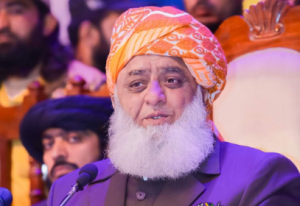Exactly a decade
earlier on August 28, 2010, the then 18-year-old Mohammad Amir’s exciting young
career came to an abrupt halt when he was banned from cricket. Amir, along with
Mohammad Asif and former Pakistan captain Salman Butt were handed a five-year ban
from cricket for their involvement in a spot-fixing scandal at the Lord’s. And on
Friday, August 28, 2020, Mohammad Amir will be bowling against England in the
first Twenty20 international, where he may cast his mind 10 years ago to
the scandal.
Amir, who was the
youngest of the three, received widespread sympathy and was granted a return to
international cricket in 2016. But his absence from the international cricket
left many wondering what his career would’ve been, had he not been involved in
the scandal.
Pakistan cricket
statistician Mazhar Arshad estimated that without his ban, Amir would have
taken 250 wickets in both Tests and ODIs.
“Amir missed 43
Tests, 137 ODIs and 57 T20 internationals in those five years. Projection-wise
he would have reached 250 in both Tests and ODIs and, who knows maybe, won
Pakistan the World Cup in 2011 (when Pakistan lost to India in the semi-finals),” AFP quoted Arshad as saying.
Only four players —
Wasim Akram, Waqar Younis, Imran Khan and Danish Kaneria — have taken 250 Test
wickets for Pakistan. Amir, now retired from Tests, has 119 in the long format
and 81 in ODIs.
“It was such a
pity losing those years. He was on the cusp of being the next best thing and to
lose those five years cost him severely… but saying that he is still a very
special bowler. Amir is one of the best I have worked with,” AFP quoted former
Pakistan coach Mickey Arthur as saying.
A young Amir was
spotted at the Asif Bajwa academy in Rawalpindi and was picked out by Wasim
Akram, Pakistan’s legendary left-arm pacer.
Amir made huge
strides, claiming 55 wickets in the 2008 first-class season, paving his way to
selection for Pakistan’s victorious Twenty20 World Cup campaign in England in
2009.
Former Pakistan
skipper Ramiz Raja said Amir’s talent was clear for all to see. “When I
first saw him I found him crafty and skilful. He was a quick learner and very
skilful and had he not lost those five years he would have been a star in all
formats,” said Raja.
A five-wicket burst at
the MCG in 2009 and a seven-wicket haul in a neutral-venue game at Leeds in
2010 — both against Australia — heralded Amir’s arrival on the Test scene.
Amir’s pace, swing and
wicket-taking ability were drawing comparisons with Wasim, and his status was
rising with 19 wickets in four Tests against England — until it all came
crashing down at Lord’s.
“A cricketer’s
life is very short, especially a fast bowler’s career and a five-year gap did a
lot of damage to my body,” Amir admitted in a YouTube interview last
month.
“My body just,
sort of, shut down. When I returned in 2016, I played regularly and that took a
toll on my body and that’s why I retired from Test cricket.”
Amir attracted
criticism with the decision to step away from Tests last year, aged just 28.
Bowling coach Waqar Younis accused him of “ditching the team”.
But Amir, who helped
Pakistan win the 2017 Champions Trophy final against India with a burst of
3-16, said one more world title would help him end his compromised career on a
high. “Whatever format I play in, I wear the Pakistan star on my chest. If
I get 500 wickets in ODIs and T20Is and win one more title then I would think I
have done justice to my career.”







